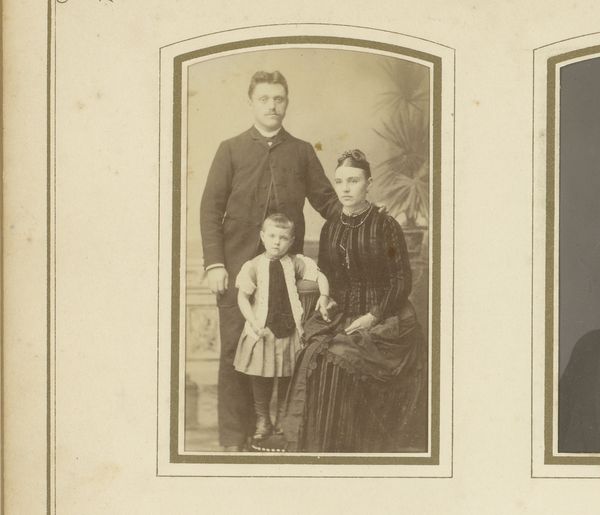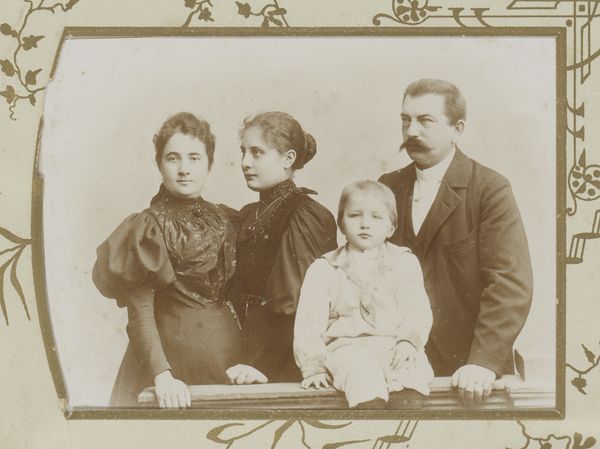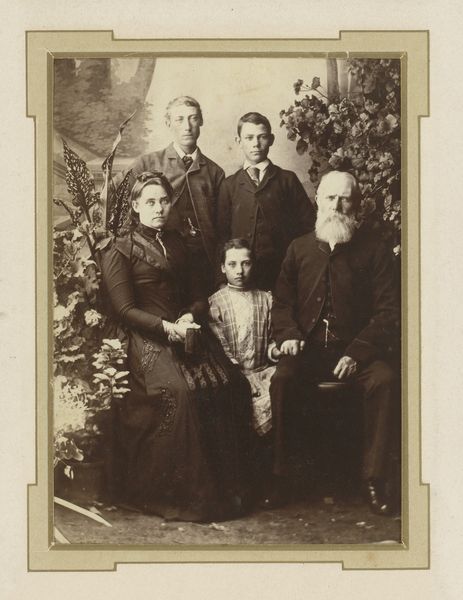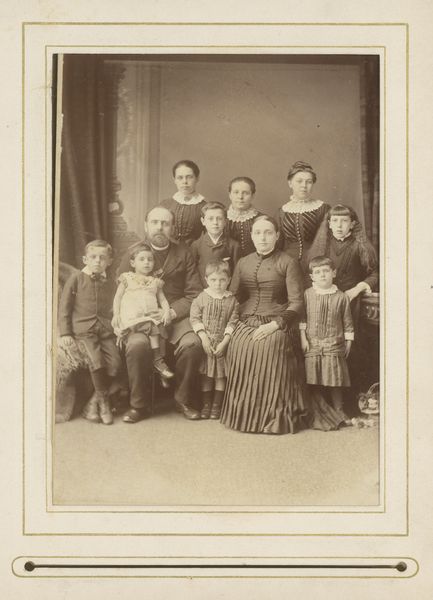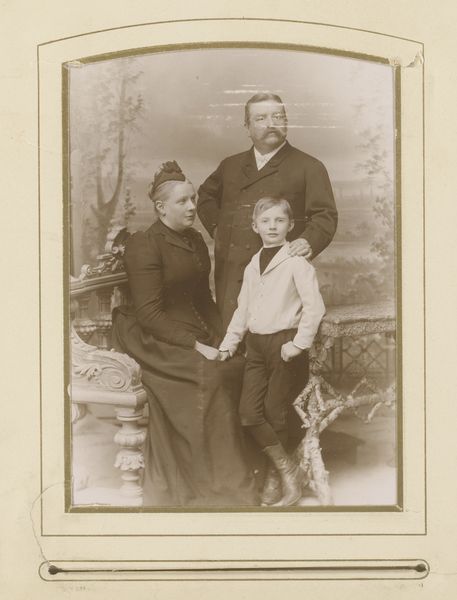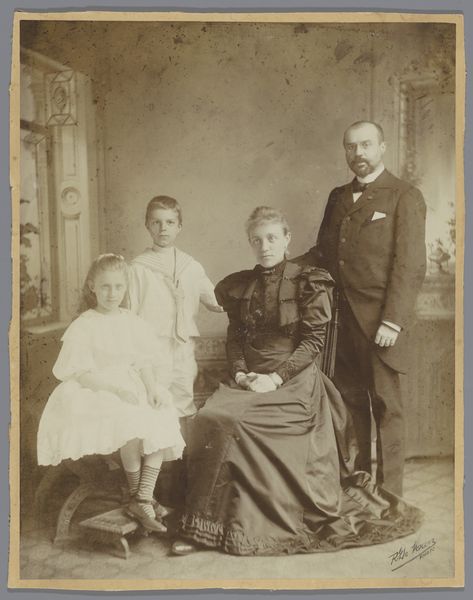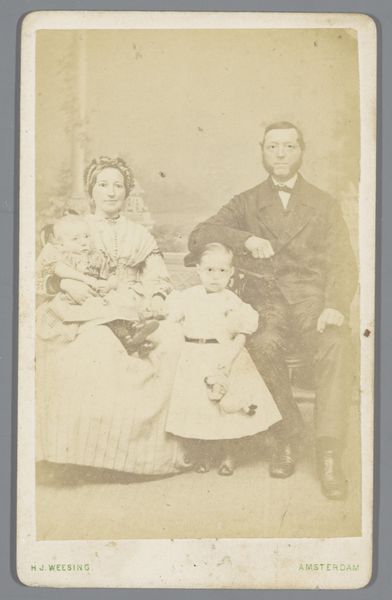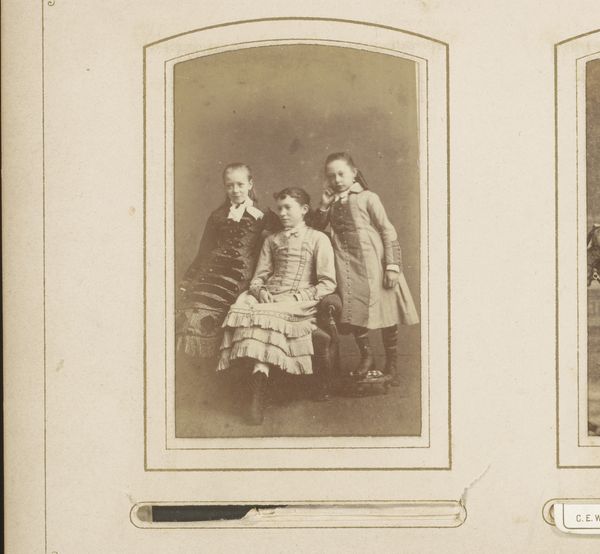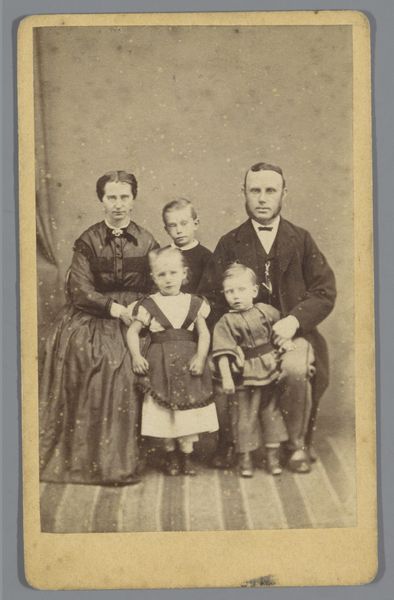
photography, gelatin-silver-print
#
portrait
#
archive photography
#
photography
#
historical photography
#
gelatin-silver-print
#
19th century
#
genre-painting
Dimensions: height 135 mm, width 98 mm
Copyright: Rijks Museum: Open Domain
Curator: Welcome. Here we have an intriguing late 19th-century gelatin silver print, entitled “Groepsportret van een man, drie vrouwen en een kind”—“Group portrait of a man, three women, and a child.” The piece dates roughly between 1850 and 1900. Editor: Immediately, I notice how stilted and serious the sitters are. It reflects the performative expectations of bourgeois Victorian life. There is a distinct power dynamic on display here, isn’t there? Curator: Indeed. Formally speaking, note how the photographer has arranged the subjects: The seated mother and patriarch frame the central grouping of the standing women and the child. Observe how the light plays across the subjects’ faces, directing our attention in a pyramid formation from the father to the two women, culminating in the apex with the single child. Editor: I wonder, looking at the women standing slightly behind, what their roles within the household might have been? Sisters? Servants? It strikes me as telling that their gaze isn't as direct; they almost seem relegated to the background despite their placement in the visual field. How interesting to read those lines of class and labor. Curator: The stark monochromatic tonality heightens the texture in the garments, drawing attention to the surface of the photographic print itself as an object. The background drapery contributes to the sense of density and visual enclosure within the frame. Editor: But that very density speaks volumes! These photographs served as tools for asserting social status. Consider the limited mobility afforded to women of this era, confined by societal norms and expectations, both literal and figurative! It is tempting to reimagine the internal lives of these subjects. Curator: Perhaps. What endures, however, is the compositional integrity, how line, tone and arrangement creates meaning within the image. Editor: For me, the act of witnessing this curated representation invites a reconsideration of those very strictures and a questioning of whose stories are rendered visible within dominant narratives. Curator: Well, whether viewing this image as an exercise in formal pictorialism or as an expression of social hierarchies, it offers a lens into a particular cultural epoch. Editor: Yes, and reminds us of the value in excavating and reconsidering our assumptions when engaging with the historical record.
Comments
No comments
Be the first to comment and join the conversation on the ultimate creative platform.
